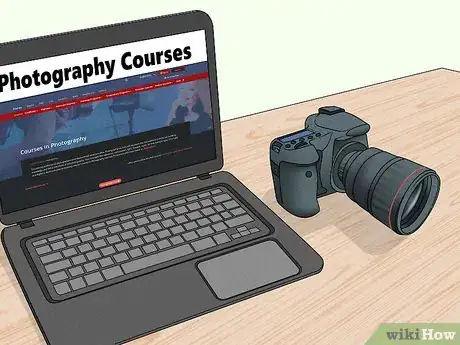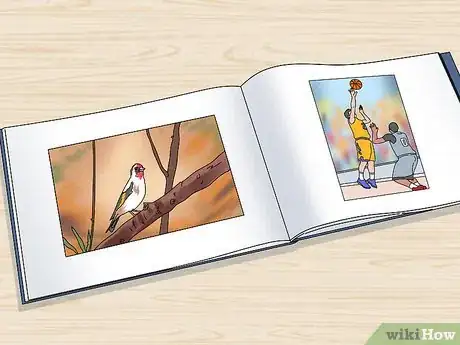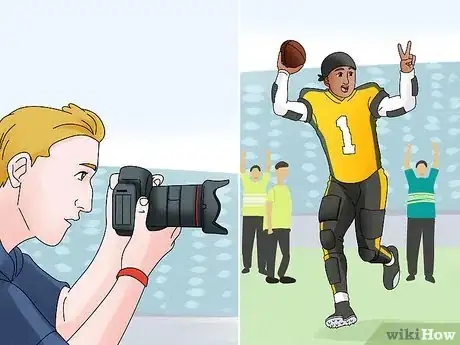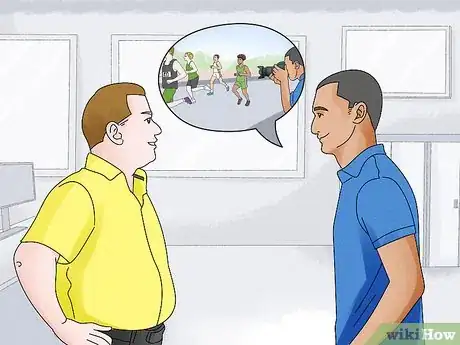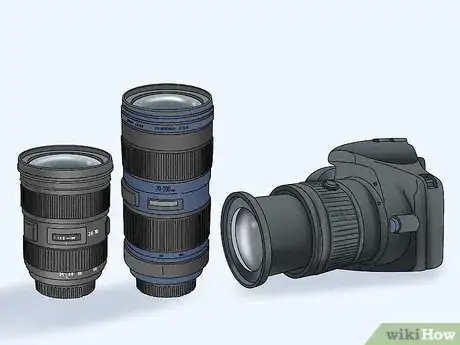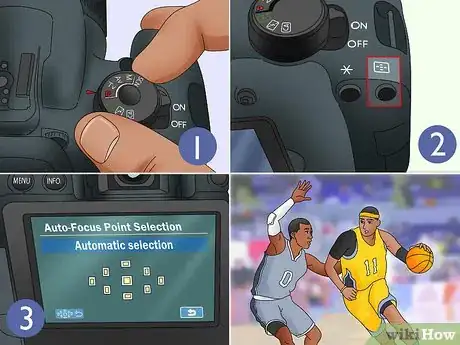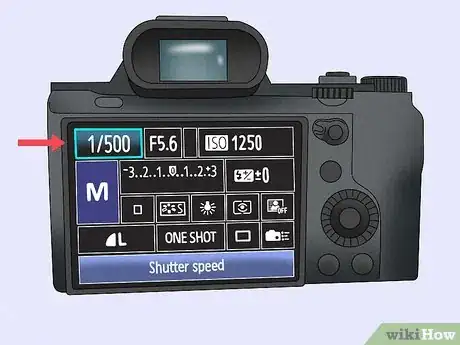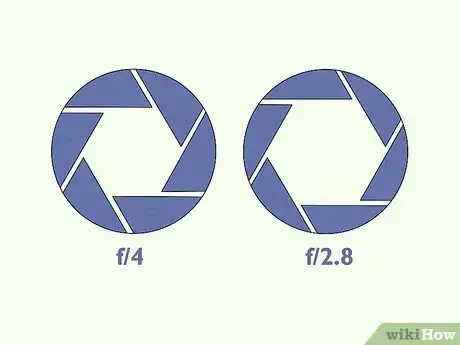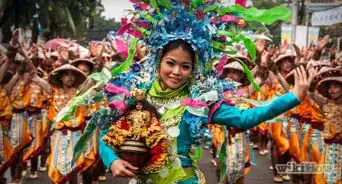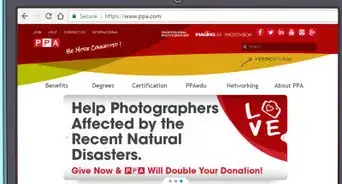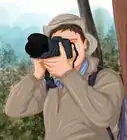This article was co-authored by Heather Gallagher and by wikiHow staff writer, Hunter Rising. Heather Gallagher is a Photojournalist & Photographer based in Austin, Texas. She runs her own photography studio named "Heather Gallagher Photography" which was voted Austin's Best Family Photographer and top 3 Birth Photographers in 2017, 2018, and 2019. Heather specializes in family Photojournalism and has over 15 years of experience documenting individuals, families, and businesses all over the world. Her clients include Delta Airlines, Oracle, Texas Monthly, and her work has been featured in The Washington Post and The Austin American Statesman. She is a member of the International Association of Professional Birth Photographers (IAPBP).
There are 18 references cited in this article, which can be found at the bottom of the page.
wikiHow marks an article as reader-approved once it receives enough positive feedback. In this case, 100% of readers who voted found the article helpful, earning it our reader-approved status.
This article has been viewed 91,119 times.
Do you want to combine your love of photography with your favorite sport? If you’re a sports photographer, you get a chance to capture all of the exciting moments in the game. You’re probably wondering how you can break into the business, so we’ll answer your most common questions so you can start shooting photos now!
Steps
How can I become a sports photographer?
-
1Take some photography courses so you can learn composition. Getting a clear and balanced image is important for any type of photography. If you’re still in school, sign up for photography classes if they’re offered to learn how to use a camera and set up a good shot. If you’re out of school, look for some online or community courses so you can get some hands-on experience behind the camera.[1]
- Try to focus on action photography, which is when you’re capturing pictures of objects in motion.[2]
-
2You don’t need a college degree, but it can help you get hired. While you don’t need a degree to photograph sports, you might get considered for more jobs if you do. Look for an associate’s or bachelor’s program that focuses on photography and apply so you can learn more about being behind a camera and the business.[3]
- About 65% of sports photographers have a bachelor’s degree.
- Don’t worry if you don’t have a degree since some employers might only consider your photography portfolio and experience behind a camera.
Advertisement -
3Build up your portfolio by taking pictures independently. You don’t have to take sports photos right away, but take some action shots that show off your expertise behind a camera. Post all of your best pictures on a personal website, social media page, or blog so other people can see your images.[4]
- Your portfolio is the most important part when employers are looking for new photographers. Make sure you only post your best pictures to showcase your skills.
-
4Look for internships with magazines or newspapers. Reach out to local publications and ask if they have any openings that you can apply for. Show them your portfolio and let them know that you want to photograph sports so they’re able to find the best available position for you. While you’re interning, you’ll learn from professionals, build your portfolio and skills even more, and meet potential employers for the future.[5]
- If you’re still in college, talk to career services to see if they have any potential internships you can try.
- Sports photography can be a pretty competitive field, so see if you can find a position in journalism or editing when you start out. That way, you can still take photos on the side and build your connections.
-
5Learn the rules and plays of sports you want to photograph. If you have a specific sport in mind, read all of the regulations and rules to learn how it’s played. Watch the sport so you can see how the players move around and react throughout the game. That way, you’ll anticipate what the players are about to do so you can set yourself up for the most exciting pictures.[6]
- Look at other photographs of the sports so you can see what actions and plays you should take photos of.
- Take some classes or play the sports you’re interested in recreationally if you want to get first-hand experience of how players react.
What other skills should sports photographers have?
-
1Be able to anticipate the actions and movements of your photo subjects. You never know when something exciting will happen, but watch your subjects for signs of what they’re going to do next. Pay attention to how a person moves around and think about how other people will react to it. Try to take your pictures right as the action is happening or just before it so you don’t miss any moments.[7]
- A lot of sports photographers say, “If you see the action in your viewfinder, then you’ve lost it,” which means that it will be too late to get the most exciting picture.
-
2Learn to compose pictures in a sequence that tells a story. When you’re taking pictures, think about what’s the most important part of the composition for your subject. Consider what they’re rooting for, how they interact with the people around them, and what elements of the background add to the emotion of your photo. Keep a list of shots that you want to capture in your head and watch for them throughout your shoot.[8]
- For example, if you’re photographing a high school football game, you may try to capture a picture of the quarterback celebrating a touchdown with their parents cheering in the background.
-
3Be ready and willing to spend a lot of time on the road. Many sports photographers spend time on the road following a team for every single game. Make sure you have a reliable vehicle or way to get around so you’re able to keep up with the team. You may also need to edit or send photos no matter where you are, so having a mobile workstation or laptop can help you stay connected.[9]
How do I get a photo pass for sporting events?
-
1Talk to a school’s athletic director to photograph their games. Visit or contact a local high school or university and ask them if they need anyone to take pictures of their events. Offer them your photos for their yearbook or school paper so you’re more likely to get the opportunity. While you’ll only be able to shoot events at that school, it’s a great way to get your foot in the door and build credibility.[10]
- If you have a child enrolled in the school, you’re more likely to take pictures for them.
- Taking pictures for a school might not be a paid position, but you may still be able to sell some of your photos to publications.
-
2Request passes from your state’s athletic association. Every state has its own application and requirements to get a media pass, so research what you need for where you live. If they give you a pass, you might only be able to cover the current season of the sport. As you build up your portfolio and repertoire as a photographer, you might get offered yearly passes.[11]
- This is usually only for high school or college games, but that’s a great place to start if you don’t have a lot of experience.
-
3Reach out to media outlets for freelance work. If you want to cover games in your area, contact any local newspapers or sports magazines to check if they need someone to cover the game. For larger professional events, reach out to national sports magazines, websites, or social media pages instead. Show off your portfolio to prove your photography skills so they’re more likely to give you a media pass.[12]
- Some passes are given out on a game-to-game basis, but you may get hired to cover the entire season if the company is impressed with your portfolio.
- Instead of payment, some smaller companies may offer a byline, which is crediting your name on the photo. If they offer this, ask to include a link to your portfolio site or social media page so other potential employers can contact you.
What cameras do sports photographers use?
-
1Pick a DSLR camera with a telephoto or zoom lens. Since you won’t get to be really close to the action, a standard lens won’t give you as dynamic of a shot. Instead, choose a camera that has a built-in zoom lens or interchangeable lenses so you can easily change them.[14] Aim for a lens that reaches at least 200–300 mm to help you get crisp photos from a distance.[15]
- There isn’t a “correct” brand of camera for sports photography, so choose whatever you’re the most comfortable using. Panasonic, Nikon, and Kodak all make great and versatile cameras you can use.
-
2Find a camera that has burst and auto-focus modes. Since action happens so fast during sports, you won’t have a lot of time to manually adjust your settings. Make sure the camera you use has an auto-focus setting so your images look really crisp. Burst mode lets you hold down the shutter and take multiple pictures at once, which helps you capture fast gameplay and movement without losing any quality.[16]
- Burst mode might be listed as “continuous mode” on some cameras.
-
3Invest in a monopod and fast memory cards. You’ll need to stabilize your camera to take clear pictures of the action. Since tripods are more difficult to set up and move around, get a monopod that extends to the ground to attach to your camera. You’ll also want a few fast memory cards that are around 128 GB to process and save images faster so you’re able to take more.[17]
- Get a nice camera bag to keep all of your gear safe and in one place.
What camera mode is best for sports photography?
-
1Change to auto-focus so you don’t have to shift it manually. Since the players move around really fast and there’s a lot of action in sports games, it’s really hard to maintain focus manually. Find the auto-focus mode in the camera settings and turn it on whenever you start photographing sports. If your camera has multiple auto-focus points, change it to single-point focus so you have more accurate images.[18]
- Auto-focus doesn’t work very well in low light settings, so you may have to manually focus your images if it’s dark or if your camera can’t find focus on your subject.
- If you can, re-assign the auto-focus function to a button on the back of your camera rather than the shutter button. That way, you won’t have to refocus as much as you adjust your composition.
-
2Switch to continuous mode to take a lot of pictures quickly. Continuous mode lets you hold down your shutter button to take a burst of pictures. That way, you can just hold the button down when a lot of fast action happens without worrying about missing the most interesting moment. You can also move your camera while you’re taking pictures and your subject will stay in focus as long as you have your auto-focus also turned on.[19]
- Taking a lot of photos will fill up your memory card fast, so try to only take pictures in short bursts so you can save some room.
-
3Shoot in JPEG so you have more room for pictures. While most photographers shoot in RAW format for higher quality, it takes longer for your camera to process and takes up a lot of memory. To shoot more photos at a faster speed, go into your camera’s setting and change the format to JPEG instead. Even though the image quality won’t be as good, you’ll still have more chances to catch the most exciting moments in the game.[20]
- Always bring extra memory cards so you don’t run out of space while you’re taking pictures at an event.
What is the best shutter speed for sports?
-
1Use 1/500 of a second to get action shots for most sports. Go into your camera’s settings and turn up your shutter speed to a minimum of 1/500 of a second. This setting lets you capture crisp and clear photos even when the players are moving around a lot. Take a few test shots right before the event starts so you can check your photo quality and adjust your shutter speed.[21]
- If you set your shutter speed any slower, then anything that’s moving in your picture might look blurry.
-
2Switch to 1/1000 for motorsports. Since race cars and motorcycles move a lot faster, you have to compensate by turning up your shutter speed. Go into your camera’s settings and turn up your shutter speed so it’s even faster. That way, you won’t get any motion blurs on the vehicles when you take your pictures.[22]
Community Q&A
-
QuestionIs it possible that one day I could be a photographer for a national team?
 CrazyGirl4Community AnswerYes, anything is possible if you work hard.
CrazyGirl4Community AnswerYes, anything is possible if you work hard.
Warnings
- Sports photography is a really competitive field, so don’t get discouraged if you don’t get a lot of gigs right away. Keep working on building your portfolio so you can improve your skills.[25]⧼thumbs_response⧽
- Avoid using the flash setting on your camera since it can distract the players.[26]⧼thumbs_response⧽
References
- ↑ http://career.iresearchnet.com/career-information/sports-photographer-career/
- ↑ https://digital-photography-school.com/take-better-action-photos/
- ↑ https://www.zippia.com/sports-photographer-jobs/
- ↑ https://careers.stateuniversity.com/pages/7881/Sports-Photographer.html
- ↑ http://career.iresearchnet.com/career-information/sports-photographer-career/
- ↑ https://www.forbes.com/sites/baileybrautigan/2016/05/18/what-it-takes-to-be-a-top-sports-photographer/?sh=19f10453a3f8
- ↑ https://www.amateurphotographer.co.uk/technique/how-to-shoot-action-and-sports-photography-625
- ↑ https://fstoppers.com/originals/11-easy-ways-improve-your-sports-photography-109759
- ↑ https://careers.stateuniversity.com/pages/7881/Sports-Photographer.html
- ↑ http://sportsphoto101.com/3-tips-to-get-sports-photography-credentials/
- ↑ http://sportsphoto101.com/3-tips-to-get-sports-photography-credentials/
- ↑ https://youtu.be/Ig0LtfqpDy0?t=958
- ↑ http://career.iresearchnet.com/career-information/sports-photographer-career/
- ↑ https://www.digitalcameraworld.com/buying-guides/best-cameras-for-sports-photography
- ↑ https://www.dpmag.com/gear/lenses/lenses-for-sports-photography/
- ↑ https://www.digitalcameraworld.com/buying-guides/best-cameras-for-sports-photography
- ↑ https://www.dpmag.com/how-to/shooting/sports-photography/
- ↑ https://expertphotography.com/focus-sharp-sports-photography/
- ↑ https://improvephotography.com/52236/15-tips-get-started-sports-photography/
- ↑ https://www.photographymad.com/pages/view/the-perfect-camera-settings-for-action-and-sports-photography
- ↑ https://www.photographymad.com/pages/view/the-perfect-camera-settings-for-action-and-sports-photography
- ↑ https://expertphotography.com/focus-sharp-sports-photography/
- ↑ https://expertphotography.com/focus-sharp-sports-photography/
- ↑ Heather Gallagher. Professional Photojournalist & Photographer. Expert Interview. 8 April 2020.
- ↑ https://careers.stateuniversity.com/pages/7881/Sports-Photographer.html
- ↑ https://www.photographymad.com/pages/view/the-perfect-camera-settings-for-action-and-sports-photography
About This Article
It may take a lot of hard work to become a sports photographer, but if you’re passionate about taking photos of athletes, you can do it. Buy a quality digital camera and attend as many sporting events and practices as possible. Take shots from a variety of different angles, then go through the photos at home to see what works for you. Gather your very best photos in a portfolio, then look through sports magazines and websites, online job boards, and social media to find job opportunities you can apply for. For tips on choosing the right lens and shutter speed, keep reading!
